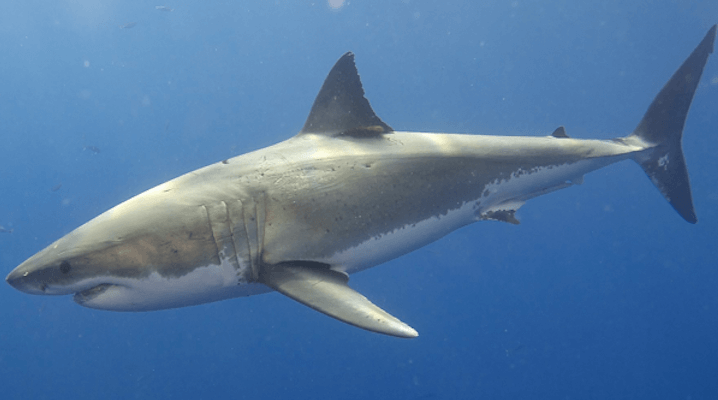 AI
AI
 AI
AI
 AI
AI
Salesforce.com Inc. provides a suite of machine learning tools called Einstein designed to improve the productivity of salespeople, help desk agents and other knowledge workers. Now, the company is extending its focus to a new audience: great white sharks.
Researchers from the company’s Einstein unit have teamed up with the Benioff Ocean Initiative at UC Santa Barbara for SharkEye, an ocean monitoring initiative detailed today. It’s a response to the uptick in great white sightings that California has been experiencing in recent years.
The situation presents a dual challenge. Researchers need insight into the behavior of California’s new sharp-toothed guests to assemble a complete picture of the marine ecosystem, while lifeguards must have the ability to spot sharks that come near the beach. Both groups have the same basic need: an efficient means to track specimen in real-time or at least close to it.
Enter SharkEye. As part of the project, Salesforce trained its Einstein Vision image recognition algorithm to identify sharks in ocean footage taken from the air. The company and the UC Santa Barbara researchers with whom it collaborated gathered the video by having a group of students fly drones along a 10-mile stretch of beach. Then, the joint team fed the recordings to Einstein Vision to teach it how to spot great whites in the vast blue of the Pacific coast.
“The way we explain it is that it’s almost exactly like how kids learn,” said Einstein project manager Zineb Laraki, one of the Salesforce engineers who worked on SharkEye. “You tell them, ‘That’s a cat.’ Eventually, kids can generalize and start to understand the concept of a cat — what it looks like, how it moves, predicting what it will do based on watching it. It’s the same thing with the algorithm.”
Einstein Vision’s training covered a lot of ground. The researchers taught it to distinguish great whites from other fish species such as the leopard shark, which doesn’t pose a danger to humans, as well as to ignore objects like floating kelp beds. They team even developed a method of telling sharks of the same species apart to avoid double counting.
Salesforce plans to open up SharkEye to California’s coastal communities. The company will share shark sighting data with lifeguards, surf school teachers and marine biologists through a modified version of its Salesforce Field Service Lightning app. The underlying computer vision software, in turn, will be made available for hobbyist drone operators.
“The benefit of drones is that you’ve got an eye in the sky to see more of the ocean,” said UC Santa Barbara professor Douglas McCauley, who leads the university’s Benioff Ocean Initiative. “It’s super-cheap to fly up and down the beach.”
Support our open free content by sharing and engaging with our content and community.
Where Technology Leaders Connect, Share Intelligence & Create Opportunities
SiliconANGLE Media is a recognized leader in digital media innovation serving innovative audiences and brands, bringing together cutting-edge technology, influential content, strategic insights and real-time audience engagement. As the parent company of SiliconANGLE, theCUBE Network, theCUBE Research, CUBE365, theCUBE AI and theCUBE SuperStudios — such as those established in Silicon Valley and the New York Stock Exchange (NYSE) — SiliconANGLE Media operates at the intersection of media, technology, and AI. .
Founded by tech visionaries John Furrier and Dave Vellante, SiliconANGLE Media has built a powerful ecosystem of industry-leading digital media brands, with a reach of 15+ million elite tech professionals. The company’s new, proprietary theCUBE AI Video cloud is breaking ground in audience interaction, leveraging theCUBEai.com neural network to help technology companies make data-driven decisions and stay at the forefront of industry conversations.